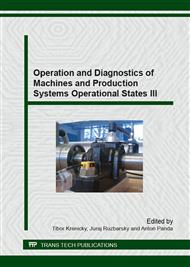p.286
p.294
p.302
p.311
p.319
p.327
p.335
p.345
p.353
Analysis of Cutting Tools Durability Importance in Turning Process of Steel C60
Abstract:
Durability of cutting tools consists form several partial sections. Determination of durability for each specific turning knife, milling head or cutting insert is very complicated. Wide spectrum of factors affects durability of cutting tools, which is important to study and analyze to point out the differences in this process. Major factor influencing cutting process is technological system, which consists of machine, toll, work piece and cutting conditions. In addition to used cutting material there are more parameters affecting cutting process. Properly selected cutting conditions and coating of cutting tool can accelerate production process, improve quality of products or vice versa economically disadvantages. Article deal with analyze of durability of selected cutting materials and compares results of experiment with F.W. Taylor rules and standard ISO 3685. Article highlights on differences developed due to different technological systems in turning process of steel C60. The article also describes process how to define and analytically express T-vc dependence.
Info:
Periodical:
Pages:
319-326
Citation:
Online since:
October 2015
Authors:
Keywords:
Price:
Сopyright:
© 2016 Trans Tech Publications Ltd. All Rights Reserved
Share:
Citation:


